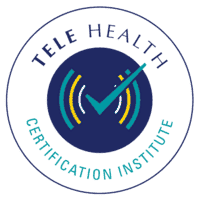Therapists are rapidly turning to telehealth as a flexible way to conduct their telemental health sessions, but sometimes the client’s strong aversion to technology is the first barrier that needs to be addressed. According to the Community Living Campaign, access, training, and equipment are the three pillars of technology literacy. Without them, clients may not have the digital literacy skills they need to engage fully in their telemental health session. In this article, you’ll find practical tips to close the tech gap between you and your client!
As a digital advocacy group, The National Digital Inclusion Alliance suggests that you first identify your client’s level of skillfulness with technology and what they’ll need to succeed. Once you’ve nailed down the barriers, you can assess your readiness to coach the client through the skill acquisition process. This could involve navigating a ZOOM log-in screen, adjusting a client’s microphone, or configuring the client’s speaker.
These are four easy-to-remember questions that can keep you on track when developing a client-centered technology plan:








The course was so informative and I was glued to my screen for the entire duration. I received so much knowledge concerning ethics in telehealth and I am greatly encouraged to read about all the standards and policies that pertain to my practice. Thank you!.